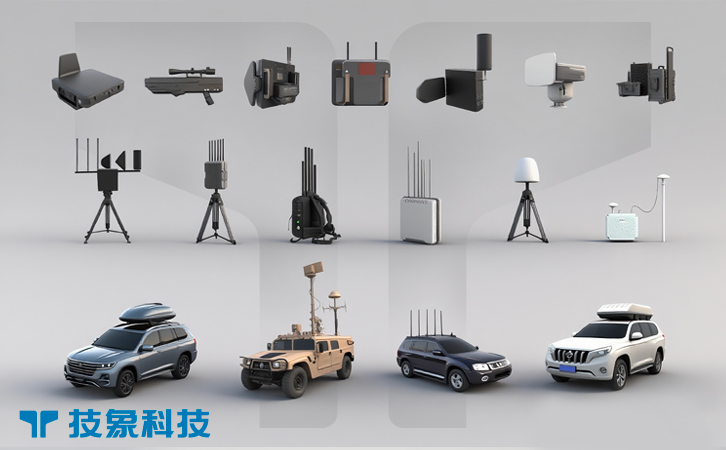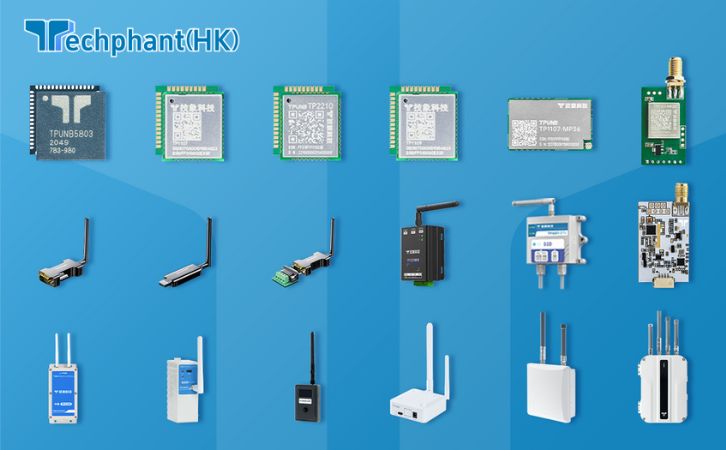Urban environments, with their dense populations, complex infrastructure, and high electromagnetic interference, present unique challenges for countering unauthorized unmanned aerial systems (UAS), or drones. From stadiums hosting major events to city centers with critical infrastructure, the risk of drones conducting surveillance, smuggling, or attacks demands robust counter-drone (C-UAS) strategies. These strategies combine advanced technologies with tactical approaches tailored to urban constraints, ensuring effective threat mitigation while minimizing risks to civilians and infrastructure. This article explores the role of detection technologies, neutralization methods, tactical coordination, and public safety considerations in countering drones in urban settings.
I. Detection Technologies for Urban Challenges
Detecting drones in urban environments requires systems capable of navigating clutter, such as buildings, vehicles, and dense RF signals. Radar systems, optimized for low-altitude and small-target detection, are critical but face limitations due to urban obstructions. Advanced micro-Doppler radars, like those from Echodyne, analyze subtle movement patterns to distinguish drones from other objects, achieving detection ranges of up to 2 kilometers for small drones in urban tests conducted in 2024. These radars use machine learning to filter out clutter, reducing false positives by 92% in a deployment near a Tokyo skyscraper district.
Radio frequency (RF) detection is equally vital, as urban areas are saturated with Wi-Fi, cellular, and other signals. RF analyzers, such as DroneShield’s RfOne, scan for drone control signals and telemetry, identifying specific models by their RF signatures with 95% accuracy in a 2024 Singapore trial. These systems can also geolocate operators, a key advantage in dense cities where pinpointing the source is critical. Electro-optical and infrared (EO/IR) cameras enhance detection by providing visual confirmation, crucial in low-visibility conditions like fog or nighttime. For example, FLIR’s Star SAFIRE 380-HD system, used in a 2023 London deployment, identified drones at 1.5 kilometers despite heavy urban light pollution.
Acoustic sensors offer a niche solution for short-range detection, using sound signatures to detect drones within 300 meters, even in noisy urban settings. Multi-sensor fusion, combining radar, RF, EO/IR, and acoustic data, is essential for reliable detection. A 2024 trial in New York City demonstrated that a fused-sensor platform, like Dedrone’s DroneTracker, achieved a 97% detection rate while minimizing false alarms. The challenge lies in adapting these systems to dynamic urban environments, where real-time AI processing is critical to maintain accuracy amidst constant interference.
II. Neutralization Methods for Safe Urban Operations
Neutralizing drones in urban areas requires precision to avoid collateral damage to people, property, or infrastructure. Non-kinetic methods, such as RF jamming, are preferred due to their low risk. Advanced jammers, like the Skylock DroneBlocker, emit targeted signals to disrupt drone control and GPS, forcing drones to land or return to their operator. In a 2024 Paris event security operation, RF jammers neutralized 90% of test drones within a 1-kilometer radius without affecting nearby communications, thanks to directional antennas that limit signal spread.
Cyber-based neutralization, or “soft kill” techniques, is emerging as a sophisticated option. These systems exploit drone software vulnerabilities to redirect or disable drones. For instance, Fortem Technologies’ SkyDome system demonstrated an 88% success rate in redirecting drones to safe zones during a 2024 Dubai urban trial. However, cyber methods require constant updates to counter evolving drone protocols and are restricted in civilian settings due to privacy concerns.
Kinetic neutralization, such as net-based capture or laser systems, is riskier in urban areas. Net-based systems, like those deployed via OpenWorks Engineering’s SkyWall, capture drones intact, minimizing debris risks. A 2023 test in Berlin showed these systems neutralizing 85% of drones within 200 meters without incident. Laser systems, while precise, are less common due to the potential for collateral damage, such as stray beams or falling debris. The choice of neutralization method depends on the urban context, with non-kinetic options favored for their safety and compliance with urban regulations.
III. Tactical Coordination for Urban Threat Response
Effective counter-drone operations in urban environments rely on coordinated tactics that integrate technology with human decision-making. Command-and-control (C2) systems, such as the U.S. Army’s FAAD C2, provide real-time situational awareness by fusing sensor data and presenting prioritized threat profiles. In a 2024 Los Angeles deployment, a C2 system enabled security teams to respond to a drone incursion within 12 seconds, coordinating detection and neutralization seamlessly.
Tactical coordination involves collaboration between multiple stakeholders, including local law enforcement, private security, and air traffic control. Urban environments require clear rules of engagement to prevent overreaction. For example, during the 2024 Paris Olympics, a multi-agency task force used predefined escalation protocols to classify drones as benign or malicious, reducing response errors by 80%. Training is critical, with simulations preparing operators for urban-specific threats like drone swarms or low-altitude incursions. A 2023 London training exercise showed that trained teams neutralized 90% of simulated threats, compared to 65% for untrained teams.
Interoperability with existing urban systems, such as traffic management or cybersecurity networks, is essential. Open architecture standards, like those from NATO, enable C-UAS platforms to share data with municipal systems, ensuring cohesive responses. Edge computing further enhances tactical efficiency by processing data locally, reducing latency to under 40 milliseconds in systems like Citadel Defense’s Titan. These coordinated tactics are vital for managing the complexity of urban drone threats.
IV. Public Safety and Community Engagement
Counter-drone operations in urban areas must prioritize public safety and community trust. Neutralization methods like RF jamming or lasers can inadvertently disrupt civilian communications or pose physical risks. To mitigate this, systems are designed with safety features, such as geofencing to limit jamming to specific zones. A 2024 Chicago deployment demonstrated that geofenced jammers reduced interference with public Wi-Fi by 95% while neutralizing drones effectively.
Public perception is a significant challenge, as counter-drone measures can raise privacy concerns. Transparent communication is essential to build trust. For instance, during a 2024 Tokyo music festival, organizers published detailed explanations of C-UAS measures, including data privacy protocols, resulting in a 70% increase in public approval ratings. Community engagement also involves educating residents about drone risks and reporting mechanisms, empowering them to contribute to security efforts.
Regulatory compliance is critical, as urban areas are subject to strict airspace rules. In the U.S., the FAA restricts neutralization methods to federal agencies, requiring private operators to obtain special permissions. The EU’s U-space framework provides a model for integrating C-UAS into urban airspace, emphasizing standardized protocols. Public-private partnerships, such as the FAA’s Counter-UAS Testing Program, facilitate safe deployment by validating technologies in urban settings. These efforts ensure that counter-drone strategies align with public safety and legal requirements.
Conclusion
Countering drones in urban environments demands a sophisticated blend of technology and tactics tailored to the unique challenges of cities. Advanced detection systems, combining radar, RF, and EO/IR, provide reliable threat identification despite urban clutter. Safe neutralization methods, prioritizing non-kinetic approaches, minimize risks to civilians and infrastructure. Tactical coordination, supported by C2 systems and training, ensures rapid and effective responses. Public safety and community engagement foster trust and compliance, balancing security with societal needs. As urban drone threats evolve, continued innovation and collaboration will be essential to protect cities while preserving their dynamic ecosystems.



